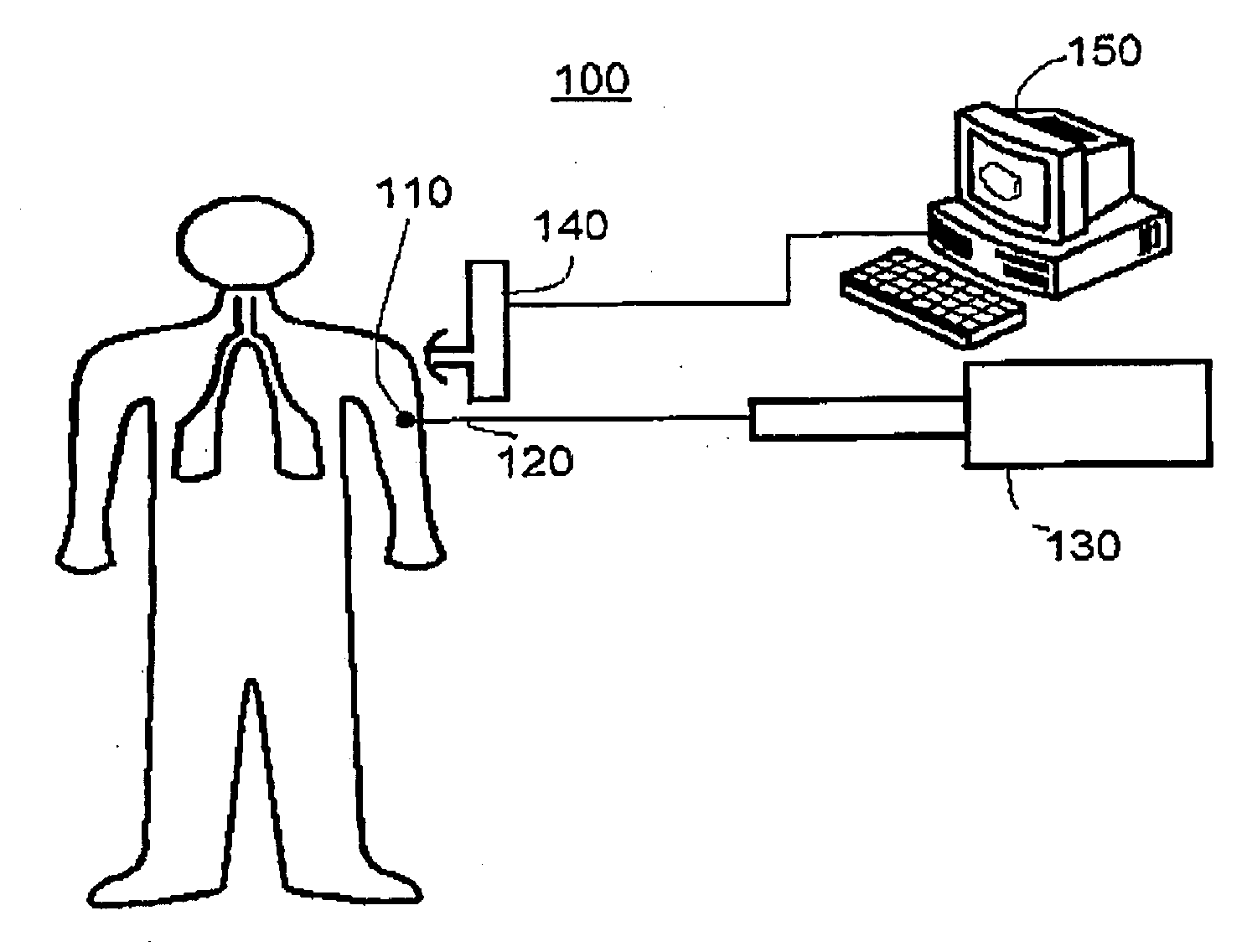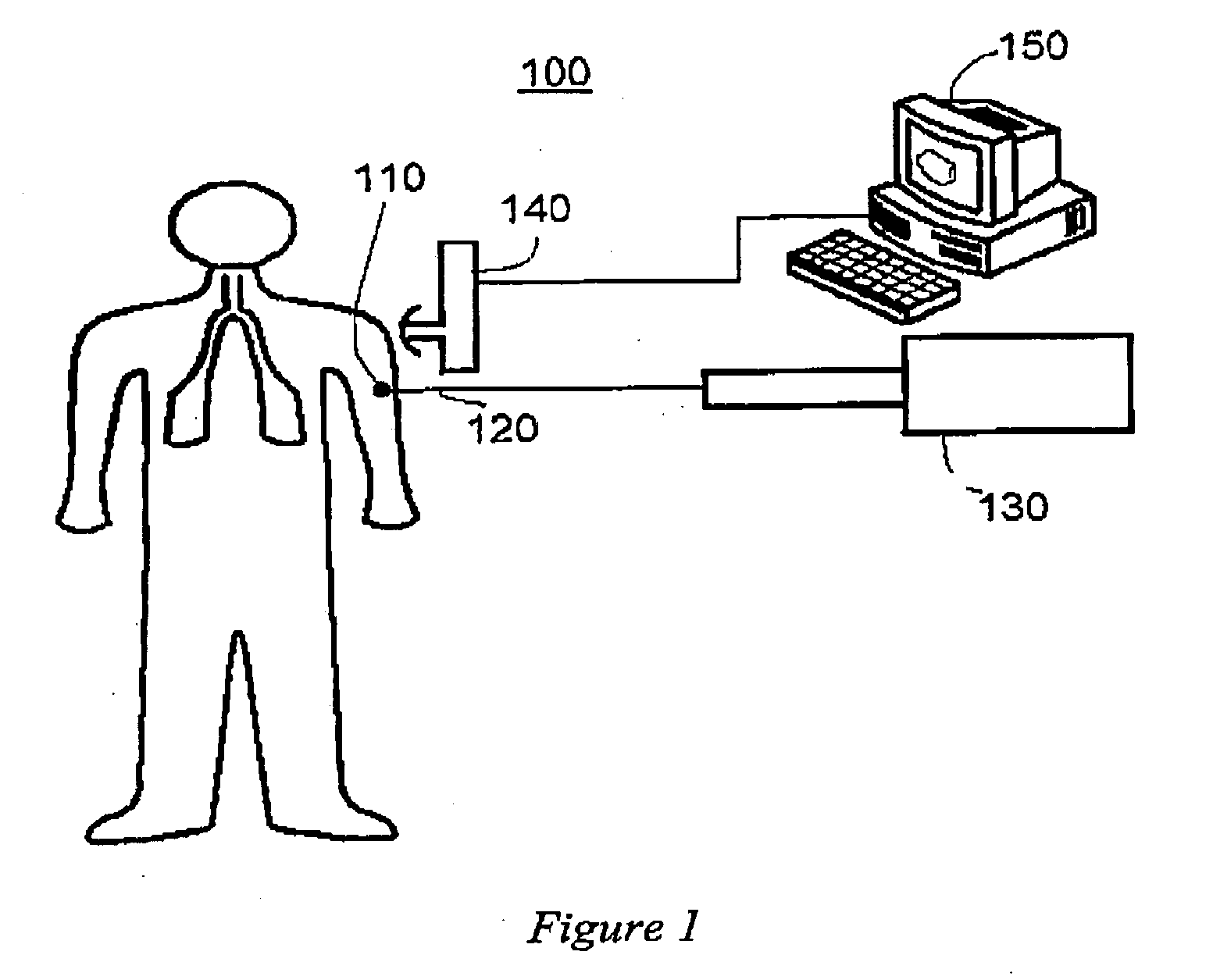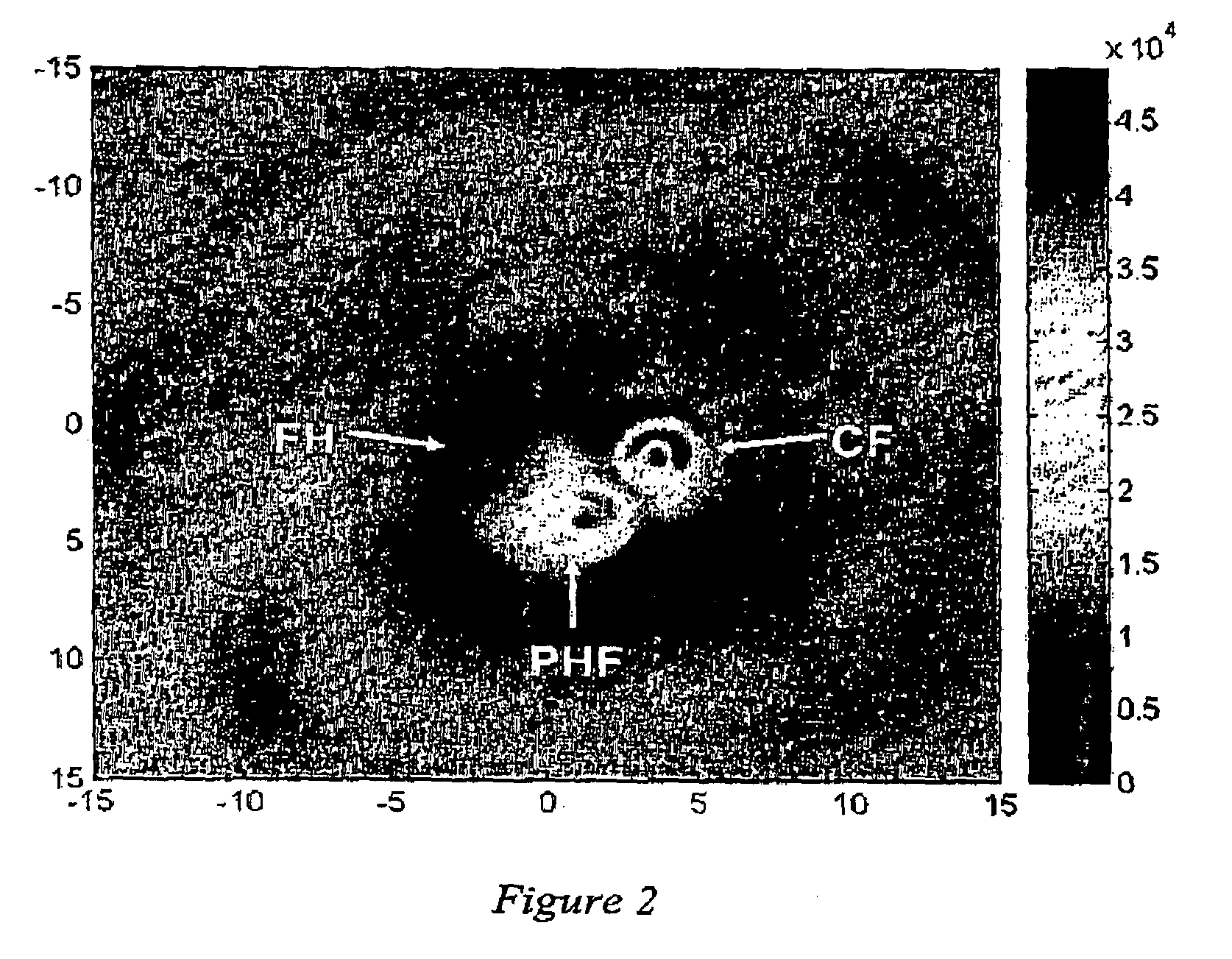Use of fullerenes in photoacoustic imaging
- Summary
- Abstract
- Description
- Claims
- Application Information
AI Technical Summary
Benefits of technology
Problems solved by technology
Method used
Image
Examples
example
Example 1
Chemicals
[0027]Polyhydroxy fullerenes (PHF) were obtained from BuckyUSA (Houston, Tex.) and MER Corp (Tucson, Ariz.). PHF were also synthesized via alkali route as detailed in Krishna et al., Applied Catalysis B: Environmental 2008, 79, 376, which is incorporated by reference herein. Pristine fullerenes and carboxy fullerenes (CF) were obtained from BuckyUSA (Houston, Tex.). Fullerene hydride was obtained from MER Corp (Tucson, Ariz.). Chitosan (medium molecular weight) was purchased from Sigma-Aldrich (St. Louis, Mo.). All other chemicals were obtained from Fisher Scientific (Hampton, N.H.).
example 2
Synthesis of Chitosan-PHF Nanoparticles (CP-0.25 and CP-0.4)
[0028]Chitosan-PHF nanoparticles were synthesized by electrostatic precipitation. Chitosan solution was prepared by adding either 25 mg (for CP-0.25) or 40 mg (for CP-0.4) of chitosan to 10 mL of 1% acetic acid. The mixture was stirred for 24 hours to dissolve the chitosan. A volume of 0.9 mL of chitosan solution was added to a microcentrifuge tube. To this, 0.1 mL of PHF (1 mg / mL) was added and mixed several times with the pipette. The mixture was washed by centrifuging at 10,000×g for 10 minutes, followed by removal of the supernatant with a pipette and resuspension of the pellet in deionized water. Three additional washes were carried out. The nanoparticles were characterized by scanning electron microscopy (SEM) (JEOL, JSM-6335F, Peabody, Mass.).
example 3
Synthesis of Silica-PHF Nanoparticles
[0029]a) Preparation of Microemulsion
[0030]A water-in-oil microemulsion was prepared by mixing 8.85 mg of Triton X-100, 8 mL of n-hexanol and 38.5 mL of cyclohexane, followed by drop-wise addition of 2400 μL of deionized water.
[0031]b) Preparation of Dye Conjugate
[0032]Dye conjugate was prepared by mixing 6 mg of flouroscein isothiocyanate (FITC) with 14 mg of 3-(aminopropyl) triethoxysilane (APTS) and 1 mL of ethanol for 12 hours in the dark.
[0033]c) Synthesis of PHF Encapsulated Dye-Doped Silica Nanoparticles (FCPS)
[0034]A volume of 1.25 mL of chitosan (0.25 wt %) was added drop-wise to 50 mL of the microemulsion, followed by addition of 750 μL PHF (10 mg / mL). The mixture was stirred for 2 hours, followed by addition of 125 μL of dye conjugate. After 5 minutes of stirring, 250 μL of tetraethyl orthosilicate (TEOS) and 500 μL of ammonium hydroxide were added. The mixture was stirred for 24 hours in the dark and then precipitated with ethanol. Th...
PUM
 Login to view more
Login to view more Abstract
Description
Claims
Application Information
 Login to view more
Login to view more - R&D Engineer
- R&D Manager
- IP Professional
- Industry Leading Data Capabilities
- Powerful AI technology
- Patent DNA Extraction
Browse by: Latest US Patents, China's latest patents, Technical Efficacy Thesaurus, Application Domain, Technology Topic.
© 2024 PatSnap. All rights reserved.Legal|Privacy policy|Modern Slavery Act Transparency Statement|Sitemap



